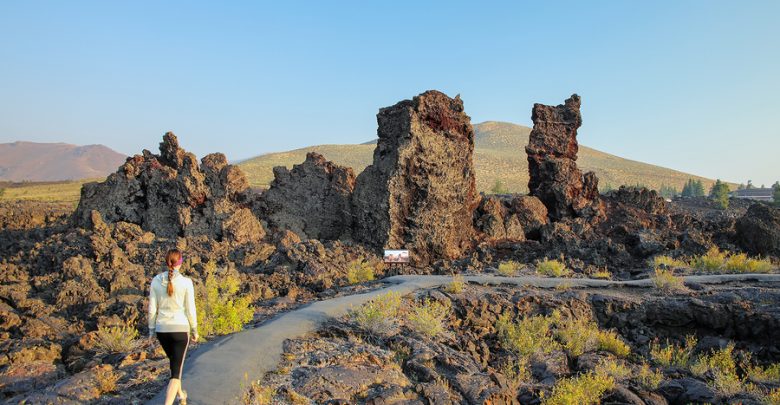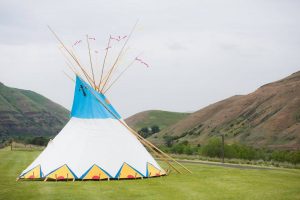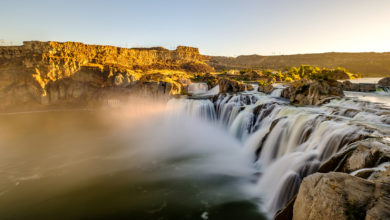
Idaho is a state well-known for mountainous landscapes, amazing tracts of protected wilderness, and some of the best outdoor recreation areas in America. Which ones should be on your list? We’re glad you asked.

City of Rocks
This national park is 2 miles north of the south-central Idaho border with Utah. If you enjoy rock climbing, this is the place to go! There are over 1,000 traditional and bolt-protected climbing routes for visitors to enjoy. This park has been popular with internationally renowned climbers since the 1970s. If you are new to climbing or want to try it for the first time, they offer a Climbing Experience Program – the program offers beginners an opportunity to try rock climbing in a safe setting and provides all the necessary equipment. Trained employees will set up easy routes for you to get a feel for the sport.

If you’d rather not climb during your stay in the City of Rocks, there are over 22 miles of hiking trails across the reserve. The trails vary in difficulty and all of the views are absolutely beautiful. The park offers 64 campsites. Camping here is highly popular between April and November so reservations are recommended on most weekends, holidays, and weekdays in June. All sites have a ground grill and picnic table. The campsite fee is $12.72 per night.

Craters of the Moon National Monument
Between 15,000 and 2000 years ago, there were 8 major eruptive periods that formed what is now called Craters of the Moon. Lava erupted from the Great Rift – a series of deep cracks that stretch 52 miles. This area is an active volcano that is constantly evolving which makes it incredibly fascinating to visit.

While you camp here, you can hike the North Crater Flow trail, Spatter Cones, or the Devil’s Orchard trails. Other activities include hiking to the Big Craters from the Spatter Cones parking lot or exploring Indian Tunnel (which requires a free cave permit you can acquire online). If you’d like to spend a half day hiking, hike the Broken Top Loop or Tree Molds Trails. The campgrounds include Lava Flow or group grounds. Camping is also allowed in the Craters of the Moon Wilderness area and the NPS Preserve and BLM Monument.

Hagerman Fossil Beds National Monument
Located in Hagerman, Idaho, this national monument is known for its fossils. This site is home to one of the world’s richest known deposits of the fossil horse Equus simplicidens. In 1988, the horse fossil found here became Idaho’s state fossil and turned this area into a national monument. It is an internationally significant spot for world-class paleontological resources.

As you walk or hike through the park, the fossils will not be obvious or visible; however, it is in the long-term plans for the park to make ongoing laboratory work and procedures more accessible to everyone who visits. Within the park, there is a portion of the Oregon Trail National Historic Trail. You can even see ruts from the wagons that used the Trail! Within the town of Hagerman, there is lodging and campgrounds you can use during your visit to the national monument.

Minidonka National Historic Site
Minidonka is located near a small town called Jerome, Idaho. In February 1942 after Pearl Harbor, FDR signed an executive order that moved nearly 120,000 Japanese and Japanese Americans into 10 isolated war relocation centers across the US. Minidonka was one of those centers. Visitors from around the world can come to this site to learn about this sad chapter of US history.

After it was no longer a relocation center, it moved through various uses such as housing, migrant labor camps, or meetings halls. After, the land served as farms for veterans for many years. In 2001, it became the 385th unit of the National Park Service. There is so much to see and learn at this site. It is well worth the trip. You can stay in Eden, Jerome, or Twin Falls during your visit to this national park.

Nez Perce National Historical Park
This is a “park about a people for all people.” For thousands of years, the valleys, prairies, mountains, and plateaus of this area have been home to the Nimi Pu (Nez Perce) people. Explore this beautiful national historical park and learn the story of the Nez Perce. This national park spreads across Idaho, Montana, Oregon, and Washington but the visitor center is located in Spalding, Idaho. To visit all the sites would take a very long time and would cover hundreds of miles, so you might want to pick and choose where you visit during your stay. Within the park, you can visit Nez Perce Story Sites, Ancient Places, Lewis and Clark Sites, The Mission Era Sites, The Treaty Era Sites, and The Flight of 1877 Sites.

Near Orofino, Idaho within the Nez Perce Park is Canoe Camp. Canoe Camp is best known as the place where the Lewis and Clark Corps of Discovery worked with the Nez Perce o carve the canoes with took the Corps to the Pacific Ocean in 1805. While at Canoe Camp, you can hike, fish, boat, horseback ride, mountain bike, and camp. Another spot in Nez Perce that is within Idaho is the Heart of the Monster. According to the Nez Perce creation story, Coyote killed a large monster along the Clearwater River near present-day Kamiah, Idaho, thus creating different tribes in the region. A rock formation in the area is said to represent the heart of the monster descred in the legend. It is sacred to the Nez Perce. Within the Heart of the Monster, you can view exhibits, hike, and picnic.




